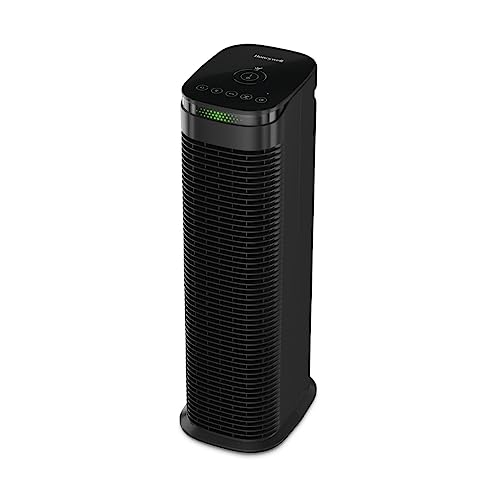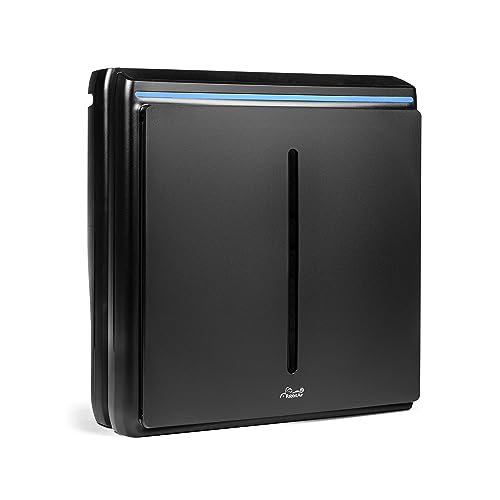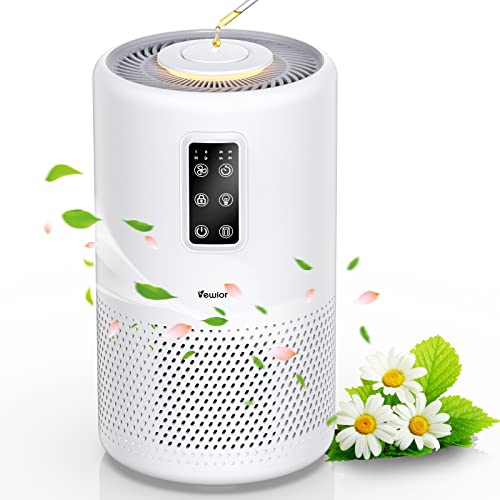Candle Smoke | Harmful Effects: Know Your Facts
This Article is Updated on – 12/09/2023, Originally posted on – 03/02/2022
Candlelight, with its warm, flickering glow, has a unique way of transforming any space into a cozy haven. Who doesn’t love the romantic ambiance it creates during a dinner date or the calming effect it has during a long soak in the tub?
Candles have been cherished for centuries, not only for their aesthetic appeal but also for the sense of serenity they bring. But here’s the kicker, folks – that seemingly harmless candle smoke can cast a shadow over your health.
Now, I know what you’re thinking. “Candles? Harmful?” Yes, you heard it right. While we all adore the enchanting aura they cast, it’s high time we shed some light on the potential downsides of those lovely little wax creations.
You see, candle smoke contains a cocktail of pollutants that can wreak havoc on your well-being.
Before you dismiss this as mere candlestick calamity, let’s dive into the nitty-gritty of why candle smoke is something you should be wary of.
Buckle up, folks, because this isn’t just a flicker in the dark; it’s a full-blown revelation that might just change the way you look at your beloved candles.
Table of Contents
Understanding Candle Smoke
Ah, the soothing flicker of candlelight – it’s hard to resist, isn’t it?
But before we bask in its cozy embrace, let’s peel back the waxen curtain and shed some light on what’s really happening when you burn that candle.
Candle smoke, dear readers, isn’t just innocent vapor; it’s a blend of tiny particles and chemicals that can take a toll on your health. So, let’s dive in and demystify this often misunderstood phenomenon.
1. Composition of Candle Smoke:

Candle smoke isn’t just a wisp of harmless air. It’s a complex brew, composed of particulate matter, volatile organic compounds (VOCs), and potentially harmful chemicals.
These tiny particles and chemicals are released into the air as the candle burns, creating what we know as candle smoke.
2. Generation of Candle Smoke:
When you light a candle, the heat from the flame causes the wax to melt and vaporize.
This vaporization process releases not only the delightful fragrance but also those pesky particles and chemicals. They rise with the heat, mingling with the surrounding air.
When they cool down, they form tiny particles that can hang around in the air for quite some time.
3. The Common Misconception:

Here’s the kicker – many people believe that candle smoke is harmless.
After all, how could something so lovely be bad for you, right? Well, it’s a common misconception. The truth is, that inhaling candle smoke can have adverse effects on your health.
Those tiny particles we mentioned earlier? They can enter your lungs and wreak havoc, especially if you’re burning candles in an enclosed space.
Now that we’ve got the basics down, let’s delve deeper into the harmful effects of candle smoke and why you should be cautious about letting those candles burn unchecked. Trust me; there’s more to this than meets the eye.
Health Risks Associated with Candle Smoke
Alright, now that we’ve peeled back the waxen curtain on candle smoke, it’s time to talk about something that should concern us all – the potential health risks.
You see, that seemingly harmless candlelit ambiance might come at a cost, and it’s essential to be aware of what you’re breathing in.
1. Negative Health Effects:

Inhaling candle smoke can lead to a host of health issues, some of which might surprise you. Here’s the lowdown on what you could be exposing yourself to:
- Respiratory Problems: One of the most immediate and noticeable effects of candle smoke is its impact on your respiratory system. Those tiny particles we mentioned earlier? They can irritate your airways and lead to symptoms like coughing, sneezing, and congestion. If you have existing respiratory conditions like allergies or asthma, candle smoke can exacerbate your symptoms, making it harder to breathe easily.
- Irritation: Ever noticed that scratchy throat or itchy eyes after burning candles for a while? That’s not a coincidence. Candle smoke can be irritating to the eyes, nose, and throat, causing discomfort and sometimes even allergic reactions.
2. Potential Carcinogenic Properties:
Now, here’s where things get a bit more serious. Some candles, particularly those made with certain materials like paraffin wax, can release potentially harmful chemicals when burned.
These chemicals, such as benzene and toluene, are known to have carcinogenic properties. Inhaling them over time may increase your risk of developing cancer.
3. Statistics and Studies:
Don’t just take my word for it; there’s plenty of research to back up these concerns. Numerous studies have investigated the composition of candle smoke and its effects on health.
For instance, a study published in the Journal of Environmental Chemistry and Ecotoxicology found that burning candles made from paraffin wax can release harmful chemicals into the air.
This underscores the importance of being cautious when choosing your candles.
So, here’s the deal. While candles can set the mood and create a warm and inviting atmosphere, it’s crucial to be aware of the potential health risks associated with candle smoke. In the next section, we’ll explore some tips on how to enjoy your candles without compromising your well-being.
Trust me; there’s a way to strike a balance between ambiance and health.
Environmental Impact of Candle Smoke
As we dive deeper into the world of candle smoke, it’s time to shed light on another critical aspect: its environmental impact.
We all love the cozy ambiance created by candles, but it’s essential to understand how our fondness for these flickering flames can affect not just our health, but the planet too.
1. Contributing to Indoor Air Pollution:

Picture this: you light a candle to set a relaxing mood at home. While it fills the room with a delightful scent and warm glow, it also releases something less pleasant—tiny particles and chemicals.
These pollutants, once released into your indoor space, contribute to what experts call indoor air pollution.
So, even if your home feels like a sanctuary, frequent candle burning can compromise your indoor air quality.
2. Impact on Air Quality and Health:
Indoor air pollution isn’t a trivial concern. It can have a significant impact on your health, especially if you’re already dealing with respiratory conditions like asthma or allergies.
Candle smoke can exacerbate these conditions, making it harder for you to breathe comfortably within the confines of your home.
3. The Role of Candle Materials in Environmental Pollution:

Now, let’s talk about the materials used in candles, particularly paraffin wax. This common candle ingredient is derived from petroleum, and when it burns, it releases not only harmful chemicals but also carbon dioxide into the atmosphere.
This means that every time you light a paraffin wax candle, you’re contributing to environmental pollution and adding to the greenhouse gas emissions linked to climate change.
So, here’s the deal: while the allure of candlelight is undeniable, it’s crucial to be aware of its environmental footprint.
As we move forward in this article, we’ll explore alternative options and tips to enjoy candlelit moments responsibly, without sacrificing your health or harming our beautiful planet.
It’s all about finding that perfect balance between creating a warm atmosphere and being mindful of the environment.
Tips for Reducing Candle Smoke Exposure
Now that we’re armed with the knowledge of the potential harm that candle smoke can cause, it’s time to explore some practical tips on how to enjoy the warm glow of candles while minimizing the negative effects on our health.
After all, there’s no need to snuff out the romance completely; we just need to be a bit more mindful.
1. Choose Safer Candle Materials:

Opt for candles made from cleaner-burning materials like soy or beeswax. Unlike paraffin wax, these alternatives produce fewer harmful chemicals when burned, reducing the risk to your health and the environment.
2. Proper Ventilation is Key:
If you’re planning a candlelit evening, make sure the room is well-ventilated. Opening windows or doors can help disperse any potential pollutants, allowing you to enjoy the ambiance without compromising air quality. This summer dehumidifiers are quite helpful in maintaining proper ventilation.
3. Trim Those Wicks:
Here’s a candle maintenance tip that’s often overlooked but can make a significant difference. Trim the wick of your candle to about 1/4 inch before lighting it. This prevents excessive smoke and ensures a cleaner burn.
4. Avoid Overburning:
Burning a candle for too long can result in excessive smoke. Follow the manufacturer’s recommendations for burn time, and when you’re done, extinguish the flame rather than letting it burn out on its own.
5. Use Candle Holders:

Placing your candles in proper holders not only enhances safety but also prevents the accumulation of soot on walls and ceilings. It’s a win-win!
6. Opt for Fragrance-Free Candles:
While scented candles can be delightful, they often contain additional chemicals to create those fragrances. If you’re particularly sensitive or concerned about air quality, consider fragrance-free options.
7. Keep Candles Away from Drafts:
Candles can produce more smoke when placed in drafty areas. Position them away from fans, open windows, or air vents to ensure a cleaner burn.
8. Consider LED Candles:

If you want the ambiance without any smoke or risk, consider LED candles. They offer a safe, flameless alternative that mimics the real thing.
By implementing these practical tips, you can enjoy the charm of candles without inhaling harmful smoke or compromising your well-being. Remember, it’s all about striking that balance between ambiance and health, so go ahead and create those cozy moments without worry.
Conclusion
Well, we’ve journeyed through the captivating world of candlelight, exploring its allure, its potential harm, and how we can strike that perfect balance between ambiance and well-being. It’s been quite an enlightening experience, hasn’t it?
Candle smoke, as we’ve discovered, is more than just fragrant swirls and gentle flickers. It’s a complex mixture of particles and chemicals that, when inhaled, can affect our health and the environment. But fear not, for armed with knowledge and a few simple strategies, you can continue to enjoy the cozy charm of candles while minimizing their negative impact.
Remember, you can choose candles made from cleaner materials like soy or beeswax, ensure proper ventilation, and follow maintenance tips to reduce smoke exposure. It’s all about making informed choices and creating a space that’s both inviting and safe.
So, the next time you light a candle, do so with awareness. Let it enhance your moments without compromising your health or our beautiful planet. After all, the warm glow of a candle should be a source of comfort, not concern.
____________________________
FAQs
Q1: Are all candles equally harmful when burned?
A1: No, not all candles are created equal. Candles made from materials like soy or beeswax tend to produce fewer harmful emissions compared to paraffin wax candles. Choosing cleaner-burning options can reduce the negative impact on your health.
Q2: Can candle smoke really worsen my allergies and asthma?
A2: Yes, candle smoke can exacerbate existing respiratory conditions like allergies and asthma. The tiny particles and chemicals in the smoke can irritate your airways, making it harder to breathe comfortably
Q3: What about scented candles? Are they safe to use?
A3: Scented candles often contain additional chemicals to create fragrances. While they can be delightful, they may release more potentially harmful compounds when burned. If you’re concerned about air quality, consider fragrance-free options.
Q4: Can I still enjoy candles without worrying about health risks?
A4: Absolutely! By following the tips we’ve discussed in this article, you can enjoy candles responsibly. Choose cleaner materials, maintain your candles properly, and ensure proper ventilation to create a safe and cozy atmosphere.
Lassowond
-
 Air Purifiers, Home Air purifier for Large Room Bedroom Up to 1560ft², VEWIOR H13 True HEPA Air Filter for Wildfire Smoke Pets Pollen Odor, with Air Quality Monitoring Light, Auto/Sleep Mode, 6 Timer$99.99
Air Purifiers, Home Air purifier for Large Room Bedroom Up to 1560ft², VEWIOR H13 True HEPA Air Filter for Wildfire Smoke Pets Pollen Odor, with Air Quality Monitoring Light, Auto/Sleep Mode, 6 Timer$99.99 -
 VEWIOR Air Purifier, Home Air purifier$99.99
VEWIOR Air Purifier, Home Air purifier$99.99 -
 Honeywell Air Purifier InSight Best HEPA HPA180B$157.98
Honeywell Air Purifier InSight Best HEPA HPA180B$157.98 -
 Rabbit Air Purifier A3 SPA-1000N Ultra Quiet$749.95
Rabbit Air Purifier A3 SPA-1000N Ultra Quiet$749.95 -
 Vornado Air Purifier QUBE50 for Home$99.99
Vornado Air Purifier QUBE50 for Home$99.99 -
 STEALTH Air Purifier for Home, H13 True HEPA Filter, Covers up to 323 sq.ft, Remove 99.97% of Airborne particles Such as Smoke, Dust, Odors, Pets Hair in Bedroom, Desktop Air Purifiers, JAP230W$79.00
STEALTH Air Purifier for Home, H13 True HEPA Filter, Covers up to 323 sq.ft, Remove 99.97% of Airborne particles Such as Smoke, Dust, Odors, Pets Hair in Bedroom, Desktop Air Purifiers, JAP230W$79.00 -
 Air Purifiers for Home Large Room up to 1290 Ft², JOWSET H13 True HEPA Filter, Air Purifier for Bedroom with Air Quality Sensor, Quiet Air Cleaners for Home, Allergies, Pet Odor, Dust, Wildfire, Smoke$89.99
Air Purifiers for Home Large Room up to 1290 Ft², JOWSET H13 True HEPA Filter, Air Purifier for Bedroom with Air Quality Sensor, Quiet Air Cleaners for Home, Allergies, Pet Odor, Dust, Wildfire, Smoke$89.99 -
 MELEDEN Air Purifiers for Bedroom, Compact HEPA Air Purifier Air Filter for Pollen Dust Smoke Pet Hair, Portable Air Cleaner for Bedroom Kitchen Baby Room.$22.99
MELEDEN Air Purifiers for Bedroom, Compact HEPA Air Purifier Air Filter for Pollen Dust Smoke Pet Hair, Portable Air Cleaner for Bedroom Kitchen Baby Room.$22.99 -
 VCK Air Purifier with H14 True HEPA Filter and PM2.5 Monitor, Remove 99.997% Particles like Dust Smoke Allergy Mold Pollen Pet Hair Odor, CARD up to 500 Perfect for Elder,Child and Pets$199.99
VCK Air Purifier with H14 True HEPA Filter and PM2.5 Monitor, Remove 99.997% Particles like Dust Smoke Allergy Mold Pollen Pet Hair Odor, CARD up to 500 Perfect for Elder,Child and Pets$199.99 -
 Air Purifiers for Bedroom Home, MOOKA HEPA H13 Filter Air Purifier with USB Cable for Smokers Pollen Pets Dust Odors in Office Car 300 Sq.Ft, Travel-size Desktop Air Cleaner with Fragrance Sponge$39.99
Air Purifiers for Bedroom Home, MOOKA HEPA H13 Filter Air Purifier with USB Cable for Smokers Pollen Pets Dust Odors in Office Car 300 Sq.Ft, Travel-size Desktop Air Cleaner with Fragrance Sponge$39.99 -
 Air Purifiers for Home Large Room with Night Light up to 1076ft², VEWIOR H13 True HEPA Air Cleaner with Fragrance Sponge, Sleep Mode, Timer, Speed, Lock, for Wildfire Smoke Pet Dust Pollen Odor$89.99
Air Purifiers for Home Large Room with Night Light up to 1076ft², VEWIOR H13 True HEPA Air Cleaner with Fragrance Sponge, Sleep Mode, Timer, Speed, Lock, for Wildfire Smoke Pet Dust Pollen Odor$89.99 -
 Air Purifiers for Bedroom, HEPA Air Purifiers, Air Cleaner for Smoke A11ergies Dander Hair Odor, Portable Air Purifier with Fragrance Sponge Sleep Mode Speed Control – AC300 Black$49.99
Air Purifiers for Bedroom, HEPA Air Purifiers, Air Cleaner for Smoke A11ergies Dander Hair Odor, Portable Air Purifier with Fragrance Sponge Sleep Mode Speed Control – AC300 Black$49.99















*This page contains affiliate links, and We earn commissions from qualifying purchases through these links. Please review our Affiliate Disclaimer for details.